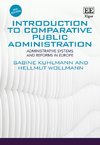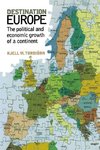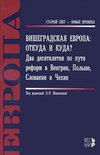
-
 Anglický jazyk
Anglický jazyk
Pillars of Russia's Disinformation and Propaganda Ecosystem
Autor: U. S. Department of State
This report was first issued in August 2020 by Mike Pompeo's State Department. With the Russian invasion of Ukraine in February 2022, it became even more relevant. The report is provided here with the addition of eight pages of analysis carried out by... Viac o knihe
Na objednávku
28.89 €
bežná cena: 32.10 €
O knihe
This report was first issued in August 2020 by Mike Pompeo's State Department. With the Russian invasion of Ukraine in February 2022, it became even more relevant. The report is provided here with the addition of eight pages of analysis carried out by the AI Editorial Board at Nimble Books. From the foreword to the original report: As the U.S. Government's dedicated center for countering foreign disinformation and propaganda, the Global Engagement Center (GEC) at the U.S. Department of State has a mandate to expose and counter threats from malign actors that utilize these tactics. In this field, Russia continues to be a leading threat. The Department works with interagency and global partners to meet this challenge, with the GEC playing a key role in coordinating efforts and helping lead a global response. A central part of this effort is exposing Russia's tactics so that partner and allied governments, civil society organizations, academia, the press, and the international public can conduct further analysis of their own and thereby increase collective resilience to disinformation and propaganda. In line with that goal, this report draws on publicly available reporting to provide an overview of Russia's disinformation and propaganda ecosystem. Russia's disinformation and propaganda ecosystem is the collection of official, proxy, and unattributed communication channels and platforms that Russia uses to create and amplify false narratives. The ecosystem consists of five main pillars: official government communications, state-funded global messaging, cultivation of proxy sources, weaponization of social media, and cyber-enabled disinformation. The Kremlin bears direct responsibility for cultivating these tactics and platforms as part of its approach to using information as a weapon. It invests massively in its propaganda channels, its intelligence services and its proxies to conduct malicious cyber activity to support their disinformation eforts, and it leverages outlets that masquerade as news sites or research institutions to spread these false and misleading narratives. This report also focuses specific attention on Russia's tactic of leveraging proxy voices that proliferate pro-Kremlin disinformation and propaganda. It includes profiles on a cross section of outlets playing this role within the broader ecosystem, and it explains how they serve as critical connective tissue to the other pillars within the broader ecosystem. The AI contribution includes the following elements, all based on AI analysis of the content of the book:A Foreword written by Slava Suwarrow, the Nimble contributing editor responsible for books about Russia and the former Soviet Union; A collection of alternate titles; A collection of alternate back cover blurbs; Automatically generated contents extracted from the text; Automatically generated BISAC categories; and a Bibliography. Because the large-language-model AI by its nature explores a larger probabilistic space than any human, the features listed above provide a variety of novel and interesting insights into the topic of Russian disinformation that are not available within the four corners of the report and would not be likely to occur to any single reader.
- Vydavateľstvo: W. Frederick Zimmerman
- Rok vydania: 2022
- Formát: Paperback
- Rozmer: 297 x 210 mm
- Jazyk: Anglický jazyk
- ISBN: 9781608881949







 Nemecký jazyk
Nemecký jazyk 
 Ruský jazyk
Ruský jazyk 



